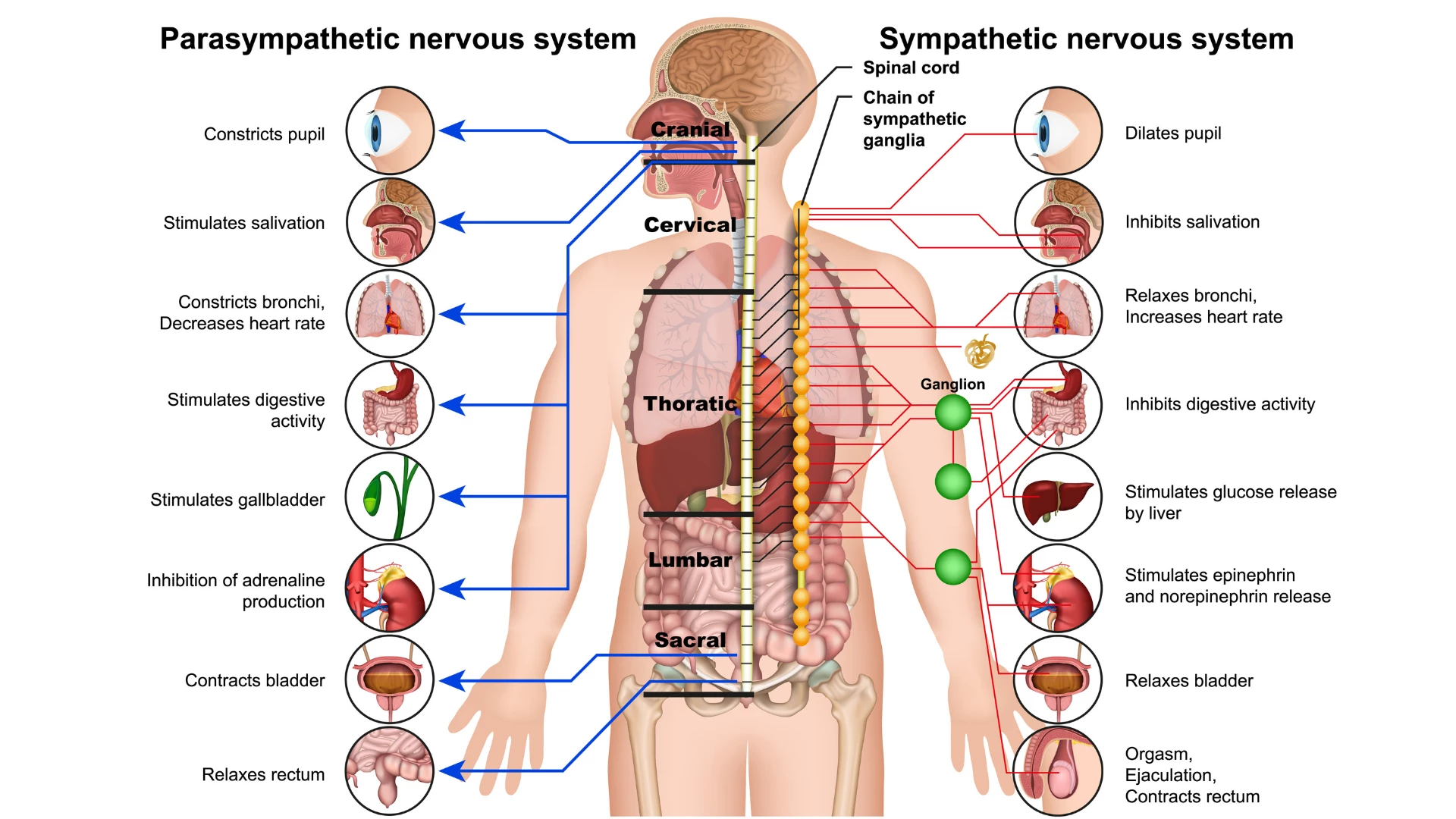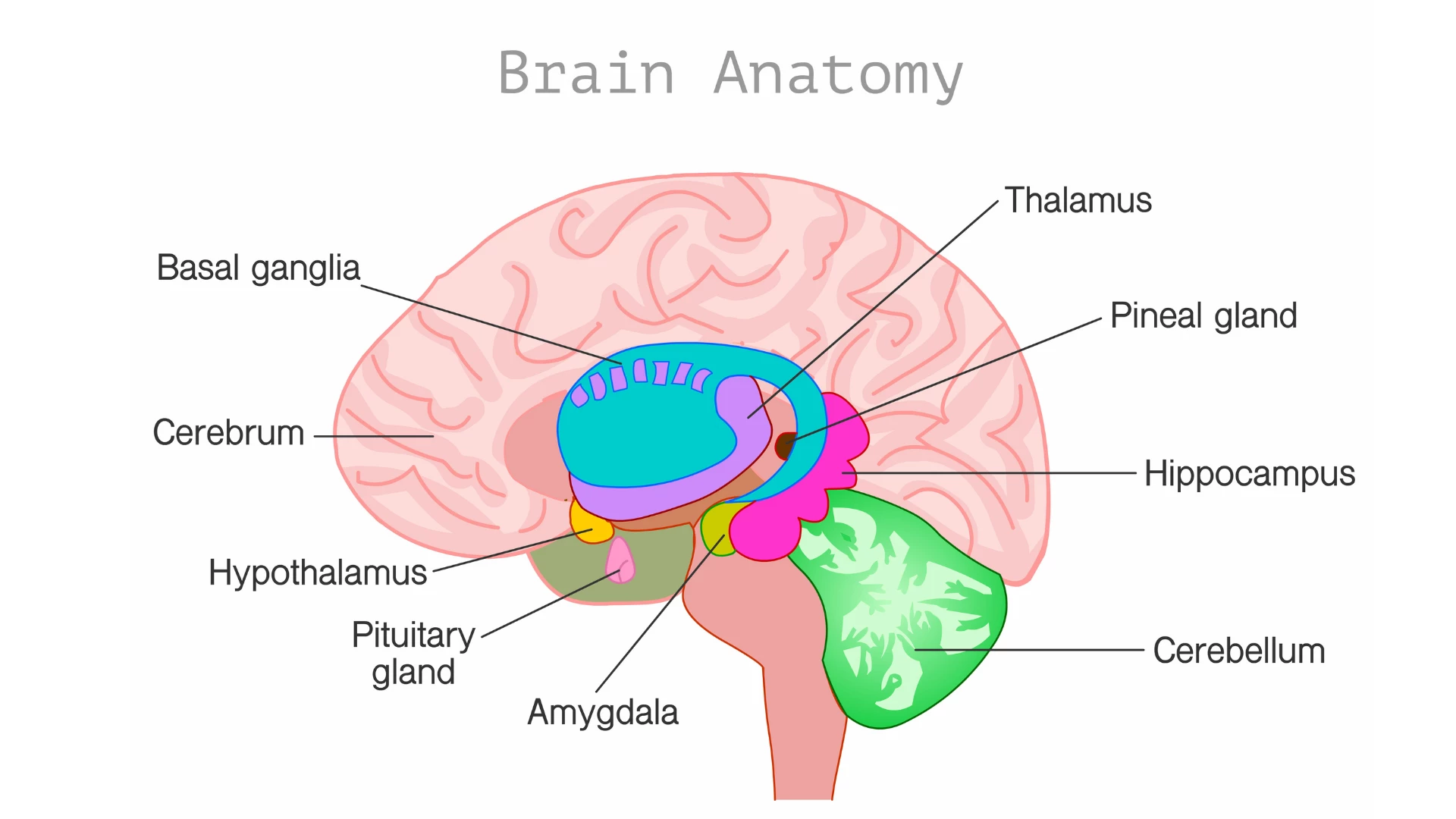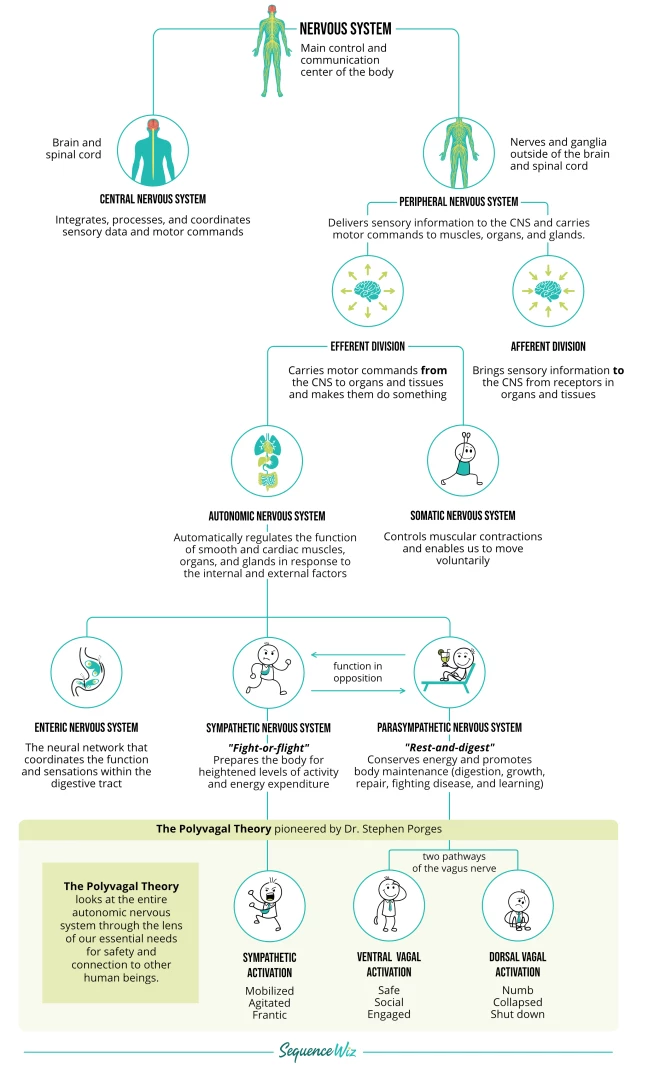From Dukha to Sukha: How the Nervous System Affects Our Physiology and Cognition

Article At A Glance
The more I study yoga, the more I realize that much of our physical and mental suffering is caused by the nervous system function gone awry, writes yoga therapist Olga Kabel. Learn how yoga can help you reset mind and body to shift from the suffering of Dukha to the ease of Sukha.
Are you or someone you know having a hard time? Do you experience mental or physical pain, tightness in your chest or stomach, restless sleep, or just a general sense of unease or dissatisfaction with how your life is unfolding right now?
The yoga tradition calls it duhkha, which can be translated as “a sense of unease” or simply “suffering.” The quintessential yogic text, Patanjali’s Yoga Sutra, advises that unnecessary suffering must be avoided.
Easier said than done! However, the more I study the body, the yoga tradition, and the Sutras, the more I realize that much of the physical, physiological, and mental suffering is caused by the nervous system function gone awry. How exactly does it work? Let’s unpack.
How Does Our Nervous System Function?

Our nervous system is one of the most delicate and sophisticated creations, with remarkable potential for learning and transformation. It receives information from the inside and outside of our bodies, processes it, and acts on it by moving the body and regulating the function of our organs, glands, and tissues.
Our sensory perceptions also form our cognition, which includes learning, memory, perception, decision-making, emotions, and all other forms of information processing. We act in response to the sensory stimuli, either reflexively or intentionally. Out of all potential scenarios, we choose to react or act in a certain way, depending on how our nervous system interprets the signals we receive. This interpretation of our sensory stimuli can be accurate, inaccurate, or ambiguous and can put us either in a state of ease (sukha) or a state of unease (duhkha).
The Nervous System and Survival

On the most fundamental level, our brains are primarily concerned with survival. To accomplish this task, the brain needs to:
- Monitor what your body needs, like food, rest, safety, sex, and shelter.
- Figure out where in the world you can satisfy those needs.
- Generate the necessary energy and drive to get you there.
- Warn you of the dangers and opportunities along the way.
- Modify plans and actions according to circumstances.
In addition, since we have better chances of survival as a group, we need to be able to coordinate and collaborate with one another. All these tasks are accomplished by our nervous system. Below is a simplified map of the different branches of the nervous system and their function. 
Nervous System Function Gone Awry
All sorts of physical, physiological, and psychological issues can occur if we
- Miss or misinterpret the inner signals about our needs.
- Cannot find a way to satisfy those needs.
- Don’t have enough energy and resources to proceed.
- Get stuck in the chronic state of high alert.
- Become too rigid to adapt to changing circumstances.
- Fail to form or keep lasting relationships.
Our life experiences, particularly chronic pain and trauma, alter our nervous system and change our perception of the outside world. We can get stuck in a state of constant alert from chronic stress, feel pain when the actual tissue damage has long healed, or relive trauma over and over as if it’s still happening. These are just some examples of the alterations of the nervous system that lead to mental and physical suffering.
Also, read...
Your Glutes and Lats in Bird Dog Pose
3 Reasons Not to Do Neck Circles
Related courses
Journey to Center: A Yoga Guide to Unlock the Full Potential of Your Core
Yoga for Healthy Hips: Principles for a Safe Practice
The Essential Trinity of the Body: The Role of the 3 Diaphragms
Need an Energy Makeover? How Yoga Can Help You Boost Vitality

Educated as a school teacher, Olga Kabel has been teaching yoga for over 14 years. She completed multiple Yoga Teacher Training Programs but discovered the strongest connection to the Krishnamacharya/ T.K.V. Desikachar lineage. She had studied with Gary Kraftsow and American Viniyoga Institute (2004-2006) and received her Viniyoga Teacher diploma in July 2006, becoming an AVI-certified Yoga Therapist in April 2011. Olga is a founder and managing director of Sequence Wiz— a web-based yoga sequence builder that assists yoga teachers and yoga therapists in creating and organizing yoga practices. It also features simple, informational articles on how to sequence yoga practices for maximum effectiveness. Olga strongly believes in the healing power of this ancient discipline on every level: physical, psychological, and spiritual. She strives to make yoga practices accessible to students of any age, physical ability, and medical history, specializing in helping her students relieve muscle aches and pains, manage stress and anxiety, and develop mental focus.
- Fundamentals of Anatomy & Physiology by Frederic H. Martini, Judi L. Nath, Edwin F. Bartholomew (affiliate link)
- MetaAnatomy: A Modern Yogi’s Practical Guide to the Physical and Energetic Anatomy of Your Amazing Body by Kristin Leal (affiliate link)
- The Body Keeps the Score: Brain, Mind, and Body in the Healing of Trauma by Bessel van der Kolk M.D. (affiliate link)
- The Polyvagal Theory in Therapy: Engaging the Rhythm of Regulation by Deb Dana (affiliate link)


